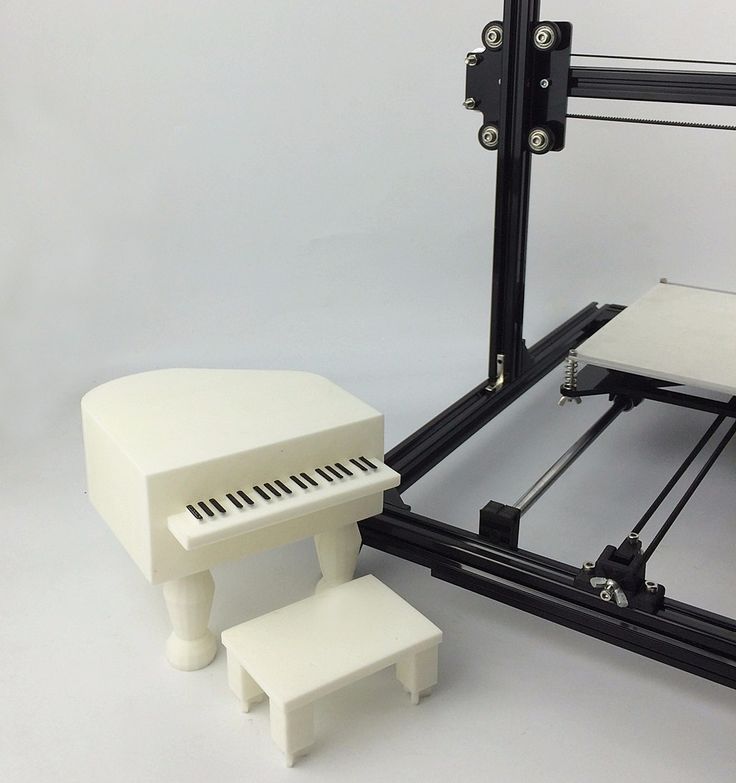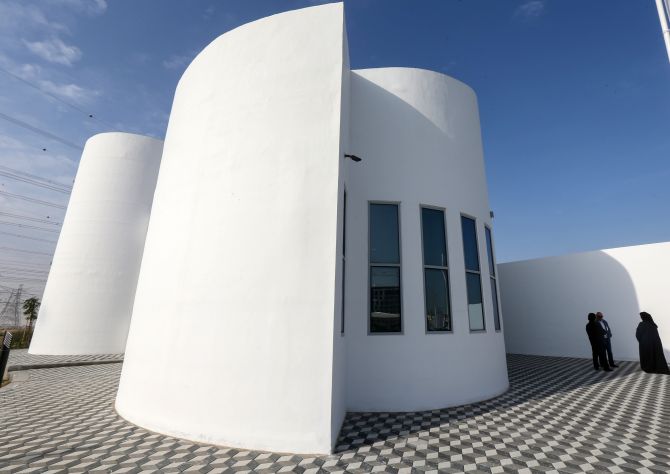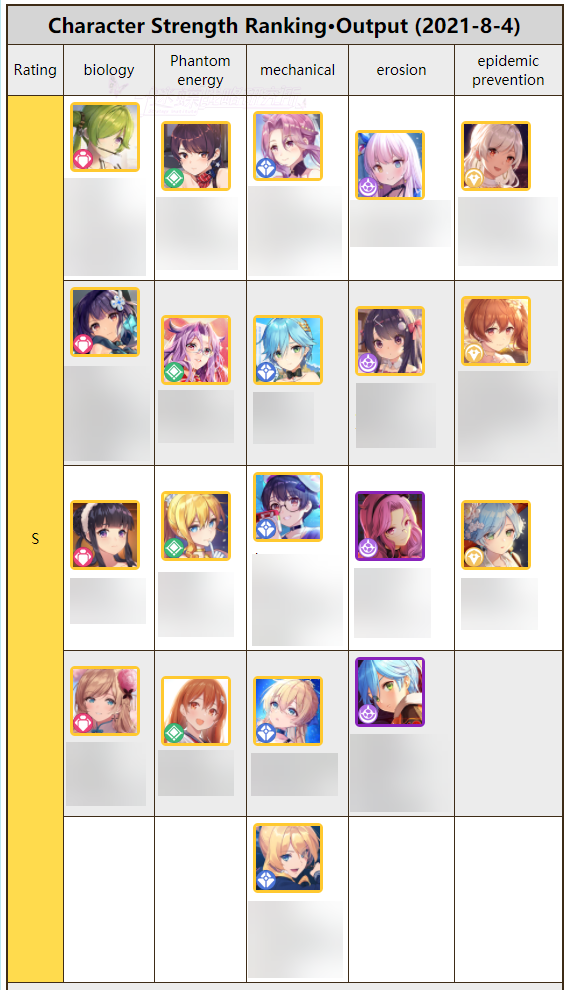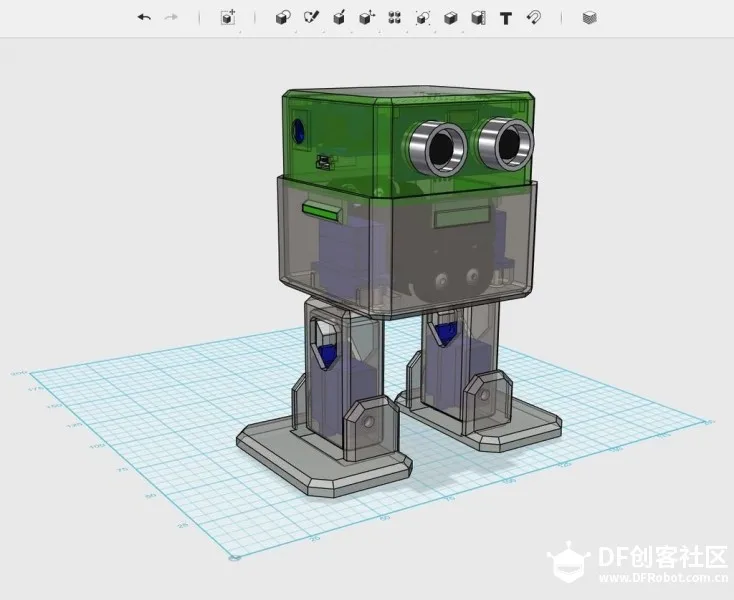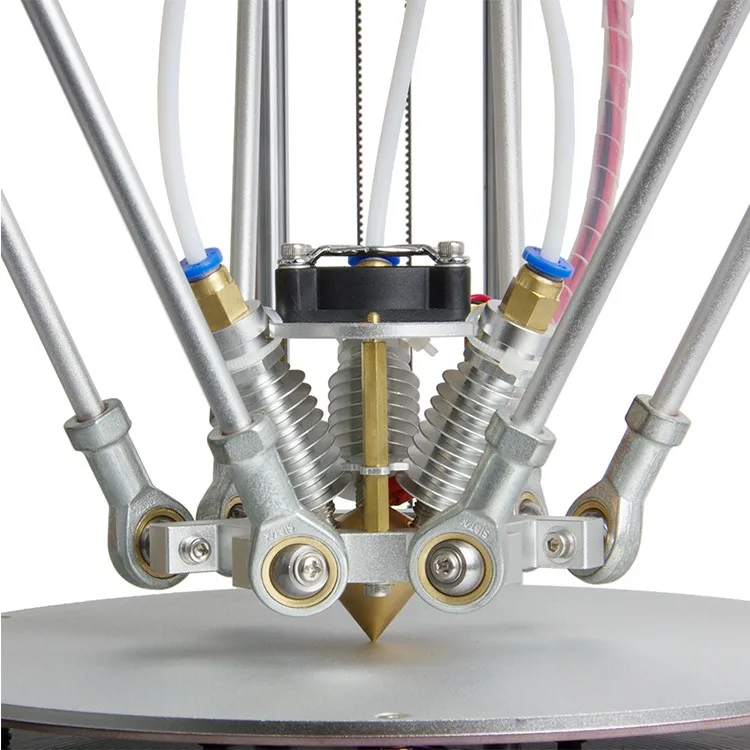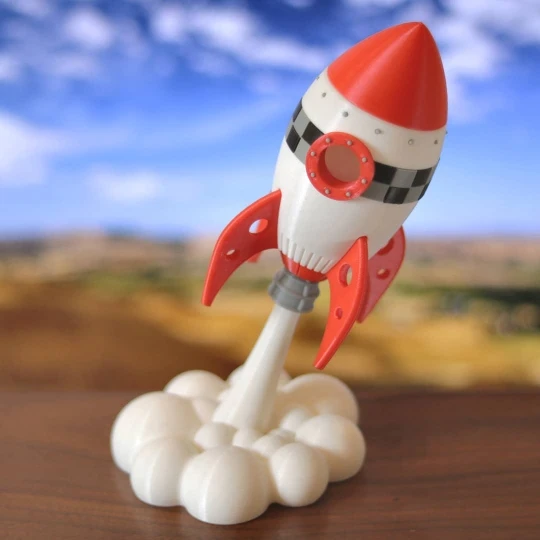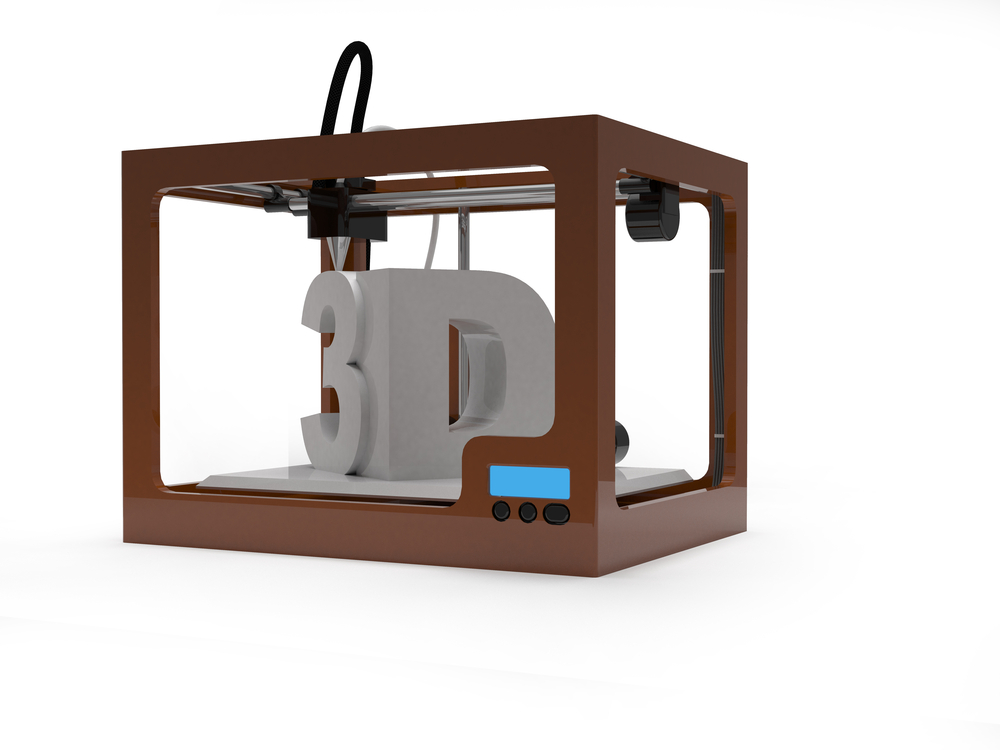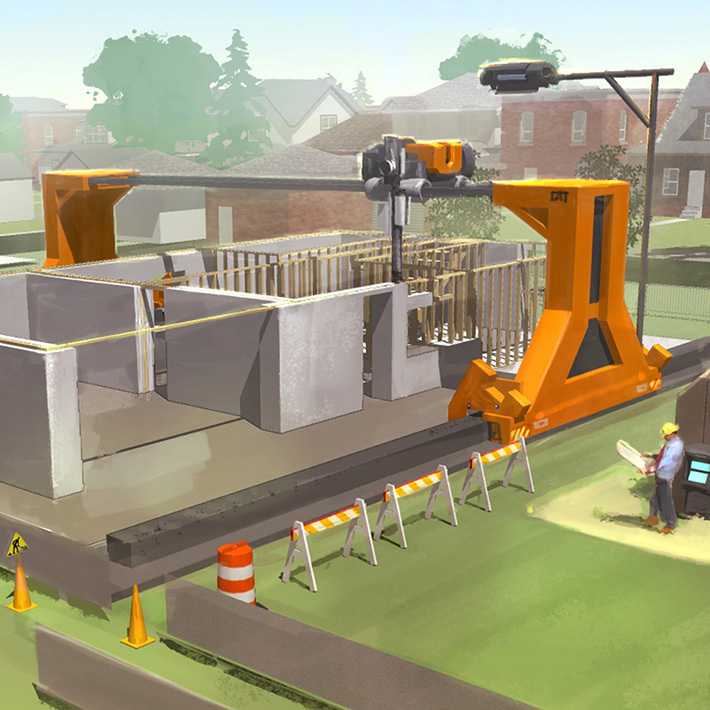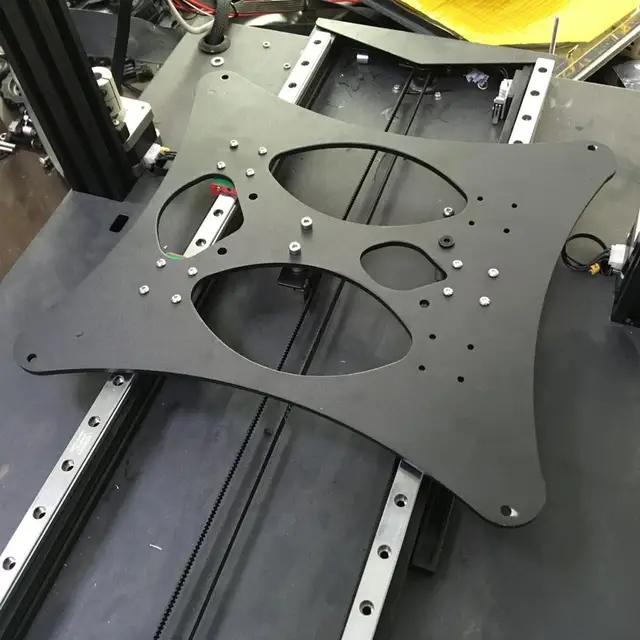3D printer substrate
What Materials Are Used in the 3D Printing Process?
The materials used for 3D printing are as diverse as the products that result from the process. As such, 3D printing is flexible enough to allow manufacturers to determine the shape, texture and strength of a product. Best of all, these qualities can be achieved with far fewer steps than what is typically required in traditional means of production. Moreover, these products can be made with various types of 3D printing materials.
In order for a 3D print to be realized in the form of a finished product, a detailed image of the design in question must first be submitted to the printer. The details are rendered in standard triangle language (STL), which conveys the intricacies and dimensions of a given design and allows a computerized 3D printer to see a design from all sides and angles.
Basically, an STL design is the equivalent of multiple flat designs in one computerized file.
The industry for 3D printing is expected to surpass the 10-figure mark in the near future and plastic is set to be the main material to drive this market. As concluded recently in a SmarTech Markets Publishing study, the market for 3D printing is likely to exceed $1.4 billion before 2020. With an ongoing market expansion, the industry has sought new ways to yield plastics, including the use of organic ingredients like soybean oil and corn. Consequently, plastics are set to become the most environmentally friendly option in 3D printing.
Plastic
Out of all the raw materials for 3D printing in use today, plastic is the most common. Plastic is one of the most diverse materials for 3D-printed toys and household fixtures. Products made with this technique include desk utensils, vases and action figures. Available in transparent form as well as bright colors — of which red and lime green are particularly popular — plastic filaments are sold on spools and can have either a matte or shiny texture.
With its firmness, flexibility, smoothness and bright range of color options, the appeal of plastic is easy to understand. As a relatively affordable option, plastic is generally light on the pocketbooks of creators and consumers alike.
As a relatively affordable option, plastic is generally light on the pocketbooks of creators and consumers alike.
Plastic products are generally made with FDM printers, in which thermoplastic filaments are melted and molded into shape, layer by layer. The types of plastic used in this process are usually made from one of the following materials:
- Polyastic acid (PLA): One of the eco-friendliest options for 3D printers, polyastic acid is sourced from natural products like sugar cane and corn starch and is therefore biodegradable. Available in soft and hard forms, plastics made from polyastic acid are expected to dominate the 3D printing industry in the coming years. Hard PLA is the stronger and therefore more ideal material for a broader range of products.
- Acrylonitrile butadiene styrene (ABS): Valued for its strength and safety, ABS is a popular option for home-based 3D printers. Alternately referred to as “LEGO plastic,” the material consists of pasta-like filaments that give ABS its firmness and flexibility.
 ABS is available in various colors that make the material suitable for products like stickers and toys. Increasingly popular among craftspeople, ABC is also used to make jewelry and vases.
ABS is available in various colors that make the material suitable for products like stickers and toys. Increasingly popular among craftspeople, ABC is also used to make jewelry and vases. - Polyvinyl Alcohol Plastic (PVA): Used in low-end home printers, PVA is a suitable plastic for support materials of the dissolvable variety. Though not suitable for products that require high strength, PVA can be a low-cost option for temporary-use items.
- Polycarbonate (PC): Less frequently used than the aforementioned plastic types, polycarbonate only works in 3D printers that feature nozzle designs and that operate at high temperatures. Among other things, polycarbonate is used to make low-cost plastic fasteners and molding trays.
Plastic items made in 3D printers come in a variety of shapes and consistencies, from flat and round to grooved and meshed. A quick search of Google images will show a novel range of 3D-printed plastic products such as mesh bracelets, cog wheels and Incredible Hulk action figures.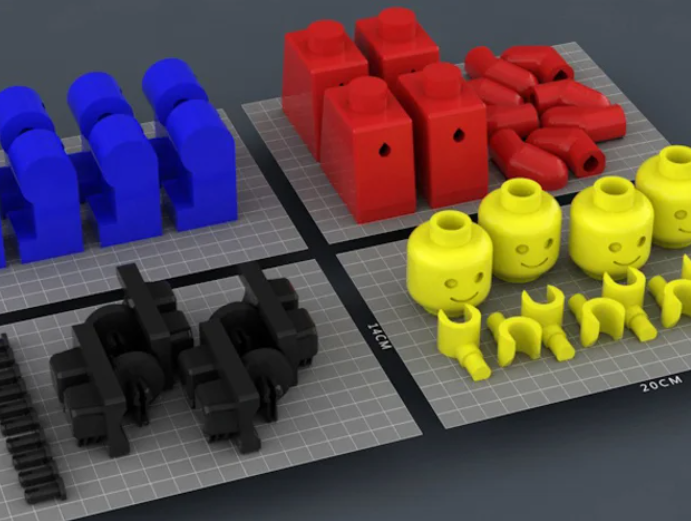 For the home craftsperson, polycarbonate spools can now be purchased in bright colors at most supply stores.
For the home craftsperson, polycarbonate spools can now be purchased in bright colors at most supply stores.
Powders
Today’s more state-of-the-art 3D printers use powdered materials to construct products. Inside the printer, the powder is melted and distributed in layers until the desired thickness, texture and patterns are made. The powders can come from various sources and materials, but the most common are:
- Polyamide (Nylon): With its strength and flexibility, polyamide allows for high levels of detail on a 3D-printed product. The material is especially suited for joining pieces and interlocking parts in a 3D-printed model. Polyamide is used to print everything from fasteners and handles to toy cars and figures.
- Alumide: Comprised of a mix of polyamide and gray aluminum, alumide powder makes for some of the strongest 3D-printed models. Recognized by its grainy and sandy appearance, the powder is reliable for industrial models and prototypes.

In powder form, materials like steel, copper and other types of metal are easier to transport and mold into desired shapes. As with the various types of plastic used in 3D printing, metal powder must be heated to the point where it can be distributed layer-by-layer to form a completed shape.
Resins
One of the more limiting and therefore less-used materials in 3D printing is resin. Compared to other 3D-applicable materials, resin offers limited flexibility and strength. Made of liquid polymer, resin reaches its end state with exposure to UV light. Resin is generally found in black, white and transparent varieties, but certain printed items have also been produced in orange, red, blue and green.
The material comes in the following three categories:
- High-detail resins: Generally used for small models that require intricate detail. For example, four-inch figurines with complex wardrobe and facial details are often printed with this grade of resin.

- Paintable resin: Sometimes used in smooth-surface 3D prints, resins in this class are noted for their aesthetic appeal. Figurines with rendered facial details, such as fairies, are often made of paintable resin.
- Transparent resin: This is the strongest class of resin and therefore the most suitable for a range of 3D-printed products. Often used for models that must be smother to the touch and transparent in appearance.
Transparent resins of clear and colored varieties are used to make figurines, chess pieces, rings and small household accessories and fixtures.
Metal
The second-most-popular material in the industry of 3D printing is metal, which is used through a process known as direct metal laser sintering or DMLS. This technique has already been embraced by manufacturers of air-travel equipment who have used metal 3D printing to speed up and simplify the construction of component parts.
DMLS printers have also caught on with makers of jewelry products, which can be produced much faster and in larger quantities — all without the long hours of painstakingly detailed work — with 3D printing.
Metal can produce a stronger and arguably more diverse array of everyday items. Jewelers have used steel and copper to produce engraved bracelets on 3D printers. One of the main advantages of this process is that the engraving work is handled by the printer. As such, bracelets can be finished by the box-load in just a few mechanically programmed steps that do not involve the hands-on labor that engraving work once required.
The technology for metal-based 3D printing is also opening doors for machine manufacturers to ultimately use DMLS to produce at speeds and volumes that would be impossible with current assembly equipment. Supporters of these developments believe 3D printing would allow machine-makers to produce metal parts with strength superior to conventional parts that consist of refined metals.
In the meantime, the use of 3D parts is taking flight in the aerospace industry. In what has been the most ambitious push of its kind, GE Aviation plans to print engine injectors at an annual rate of 35,000 units by 2020.
The range of metals that are applicable to the DMLS technique is just as diverse as the various 3D printer plastic types:
- Stainless-steel: Ideal for printing out utensils, cookware and other items that could ultimately come into contact with water.
- Bronze: Can be used to make vases and other fixtures.
- Gold: Ideal for printed rings, earrings, bracelets and necklaces.
- Nickel: Suitable for the printing of coins.
- Aluminum: Ideal for thin metal objects.
- Titanium: The preferred choice for strong, solid fixtures.
In the printing process, metal is utilized in dust form. The metal dust is fired to attain its hardness. This allows printers to bypass casting and make direct use of metal dust in the formation of metal parts. Once the printing has completed, these parts can then be electro-polished and released to the market.
Metal dust is most often used to print prototypes of metal instruments, but it has also been used to produce finished, marketable products such as jewelry. Powderized metal has even been used to make medical devices.
When metal dust is used for 3D printing, the process allows for a reduced number of parts in the finished product. For example, 3D printers have produced rocket injectors that consist of just two parts, whereas a similar device welded in the traditional manner will typically consist of more than 100 individual pieces.
Carbon Fiber
Composites such as carbon fiber are used in 3D printers as a top-coat over plastic materials. The purpose is to make the plastic stronger. The combination of carbon fiber over plastic has been used in the 3D printing industry as a fast, convenient alternative to metal. In the future, 3D carbon fiber printing is expected to replace the much slower process of carbon-fiber layup.
With the use of conductive carbomorph, manufacturers can reduce the number of steps required to assemble electromechanical devices.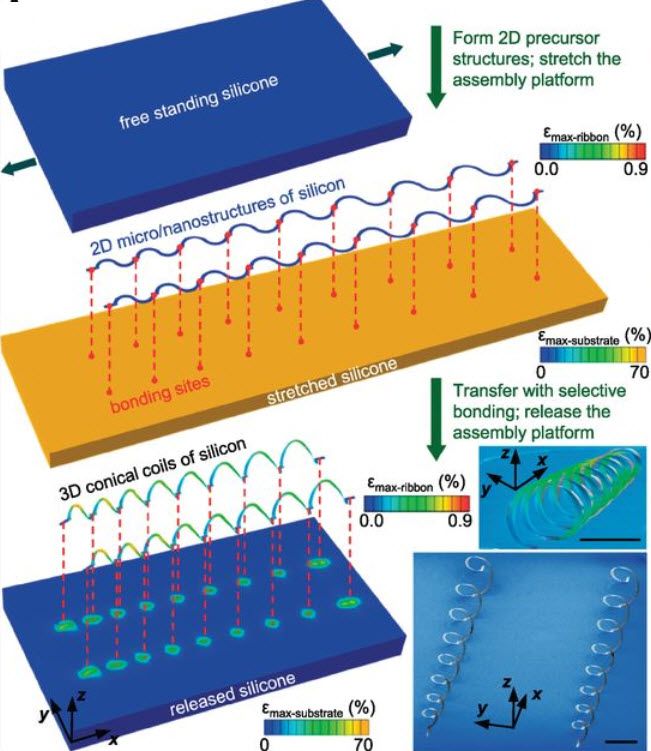
Graphite and Graphene
Graphene has become a popular choice for 3D printing because of its strength and conductivity. The material is ideal for device parts that need to be flexible, such as touchscreens. Graphene is also used for solar panels and building parts. Proponents of the graphene option claim it is one of the most flexible of 3D-applicable materials.
The use of graphene in printing received its largest boost through a partnership between the 3D Group and Kibaran Resources, an Australian mining company. The pure carbon, which was first discovered in 2004, has proven to be the most electrically conductive material in laboratory tests. Graphene is light yet strong, which makes it the suitable material for a range of products.
Nitinol
As a common material in medical implants, nitinol is valued in the 3D printing world for its super-elasticity. Made from a mixture of nickel and titanium, nitinol can bend to considerable degrees without breaking.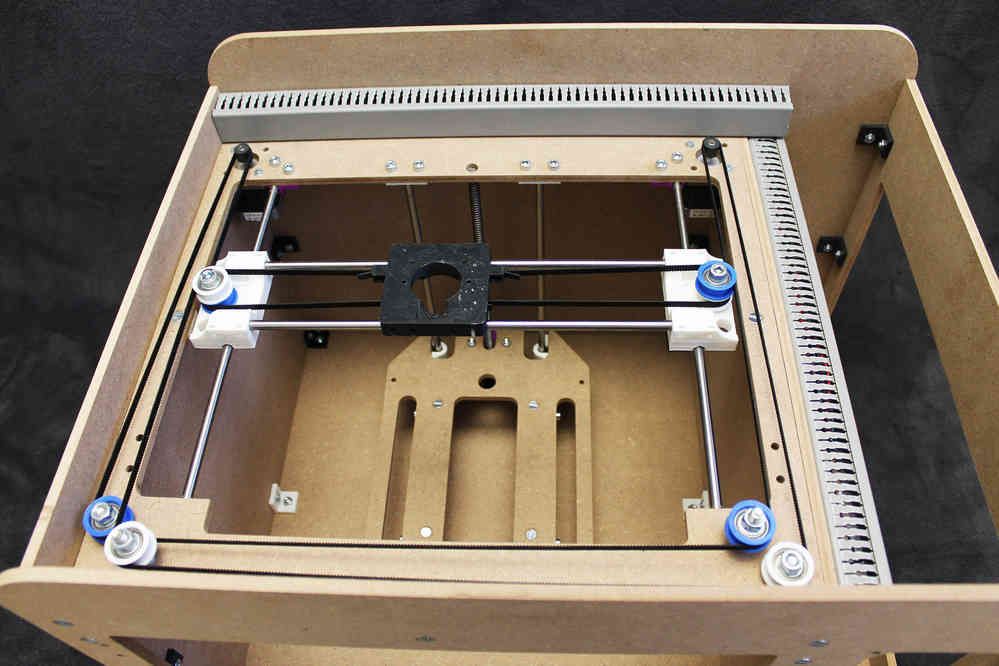 Even if folded in half, the material can be restored to its original shape. As such, nitinol is one of the strongest materials with flexible qualities. For the production of medical products, nitinol allows printers to accomplish things that would otherwise be impossible.
Even if folded in half, the material can be restored to its original shape. As such, nitinol is one of the strongest materials with flexible qualities. For the production of medical products, nitinol allows printers to accomplish things that would otherwise be impossible.
Paper
Designs can be printed on paper with 3D technology to achieve a far more realistic prototype than a flat illustration. When a design is presented for approval, the 3D-printed model allows the presenter to convey the essence of the design with greater detail and accuracy. This makes the presentation far more compelling, as it gives a more vivid sense of the engineering realities should the design be taken to fruition.
Get 3D Plating From Sharretts Plating Company
For more than 90 years, Sharretts Plating Company has offered prompt, affordable, high-quality plating services. Operating from our 70,000-square-foot Pennsylvania production facility, we offer services to customers across North America and abroad.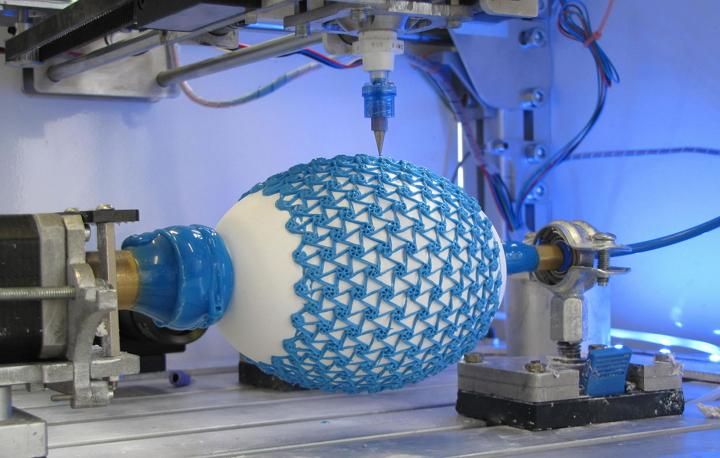 As one of the most globally recognized names in the plating industry, our customizers know they can trust us for plating, metal finishing and other solutions.
As one of the most globally recognized names in the plating industry, our customizers know they can trust us for plating, metal finishing and other solutions.
With each passing decade, SPC has remained at the forefront of innovation in the world of plating. Now, with 3D printing technology approaching maturity, we are determined to meet the demands of this exciting and revolutionary new form of product creation.
At SPC, our extensive background with plating applications has allowed us to apply these capabilities to 3D-printed parts. In recent years, we have applied surface finishing to 3D parts manufactured by electronics and automotive companies as well as in numerous other industries. Regardless of your industry, we can customize a process that will suit your products.
Ultimately, companies that master this technology are bound to have an edge over their competition. Browse our 3D-print plating page to learn more about the options and contact us today for a free quote.
Material ABS (Acrylonitrile Butadiene Styrene) | Advantages
| Disadvantages
| Hardware Requirements Standard FDM printer, heated enclosure recommended |
Material ASA (Acrylic Styrene Acrylonitrile) | Advantages
| Disadvantages
| Hardware Requirements Standard FDM printer, heated enclosure recommended |
Material PP (Polypropylene ) | Advantages
| Disadvantages
| Hardware Requirements May require nonstandard bed covers for adhesion |
Material Nylon (Synthetic Polymers) | Advantages
| Disadvantages
| Hardware Requirements May require specialized hot end nozzle |
Material PLA (Polylactic Acid) | Advantages
| Disadvantages
| Hardware Requirements Standard FDM printer |
Material HIPS (High Impact Polystyrene) | Advantages
| Disadvantages
| Hardware Requirements Standard FDM printer, heated enclosure recommended |
Material PC (Polycarbonate) | Advantages
| Disadvantages
| Hardware Requirements FDM printer capable of printing at very high temperatures |
Material Flexible (made of Thermoplastic Elastomers) | Advantages
| Disadvantages
| Hardware Requirements Direct drive or Bowden extruder required |
Material PVA (Polyvinyl Alcohol) | Advantages
| Disadvantages
| Hardware Requirements Standard FDM printer |
Material PETG (Glycol Modified version of PET) | Advantages
| Disadvantages
| Hardware Requirements Standard FDM printer |
Material Wood-Based Filament | Advantages
| Disadvantages
| Hardware Requirements Standard FDM printer |
Material Metal Filled Filaments | Advantages
| Disadvantages
| Hardware Requirements Standard FDM printer with hardened nozzle |
Material Carbon Fiber Filled | Advantages
| Disadvantages
| Hardware Requirements Standard FDM printer with hardened nozzle |
Hot table pad for 3D printer, from Creozone brand.
 Great replacement for glass, beer, sweet water, glue and hairspray.
Great replacement for glass, beer, sweet water, glue and hairspray. Reviews
Follow author
Follow
Don't want
19
“THE BABA DID NOT KNOW GROWTH, THE BABA PIG BUYED!”
This is me talking about my Anet A8 3D printer, which I recently reviewed. So now I'm fooling around with all sorts of printer modifications. And the purchase of additional accessories and spare parts. Today I decided to talk about the substrate for the hot table.
From the moment of purchase, an adhesive tape was stuck on the heating table, on which the PLA plastic adhered perfectly. But this tape has one drawback - it starts to come off after 2-3 prints, along with the printed model. As a result, the printing of small details turned into an additional game “guess the place in the slicer where the tape is still intact”. But to be honest, I'm tired of it.
Masking tapes bought offline turned out to be thinner, less rough and PLA simply did not want to stick to them.
I didn't like trying to print on glass either. Due to not very convenient fasteners in the form of stationery clips. And besides, two days after testing, I managed to break the glass and cut myself.
In general, somehow I did not succeed with glass. Therefore, I decided not to be smarter, and just order a new roll of duct tape on Aliexpress. The choice fell on adhesive tape from Mikromake. And I almost ordered it, but at that moment I saw a hot table pad in the Creozone store. It is claimed to be reusable and has excellent adhesion to any plastics. Price $15 for 3 pads. I thought a little and decided that it was better to order a substrate. Not a small part of my decision was influenced by the appearance of the substrate. She looks prettier than duct tape pasted on a hot table.
The store made me happy, of course. The fact that he issued a track number within 3 hours after the order. I don't see that kind of fluency often.
But the delivery did not please at all.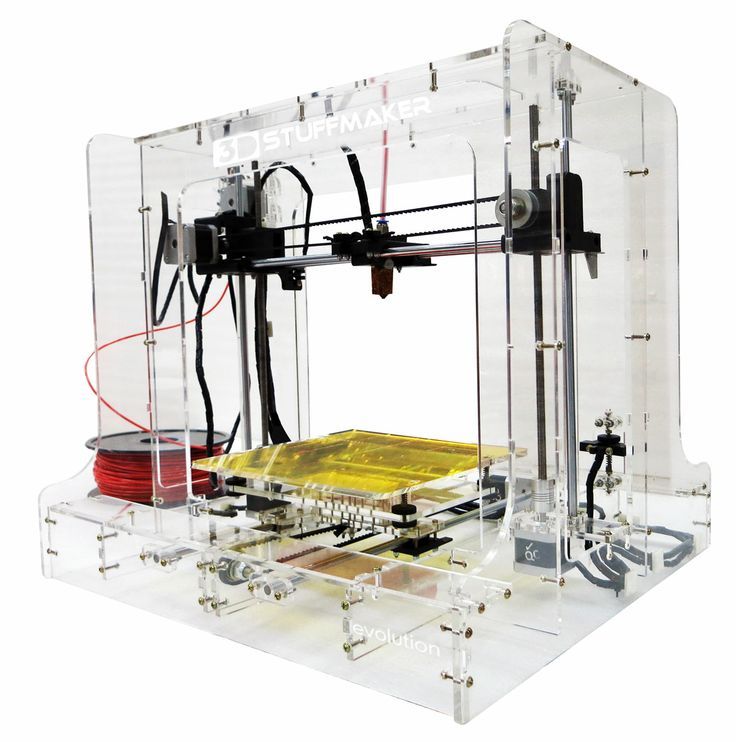 Despite the fact that the parcel was sent by China Post, it took 25 days to reach me. (The holidays in China are partly to blame, because of which the parcel was waiting for transportation for a whole week) I think if there were no holidays, the delivery time would have taken the usual 18-20 days.
Despite the fact that the parcel was sent by China Post, it took 25 days to reach me. (The holidays in China are partly to blame, because of which the parcel was waiting for transportation for a whole week) I think if there were no holidays, the delivery time would have taken the usual 18-20 days.
The pads came in a regular package, which I didn't even take a picture of. Inside were three pads in an antistatic bag with a bag of silica gel:
The size declared by the store 214x214mm completely coincided:
Something like 2-sided adhesive tape from 3M was glued on the back side of the substrate:
The substrate is installed quite simply.
At the time of arrival of the parcel, my table looked like this:
I tear off the remaining tape:
I use alcohol wipes to remove glue and dust residues:
The manufacturer recommends gluing the substrate according to the following instructions:
the bottom of the paper, applied more or less evenly and glued
But first I cut off the corners with ordinary scissors. To have access to the bolts to adjust the level of the table.
To have access to the bolts to adjust the level of the table.
It turned out like this:
I calibrated the table with a piece of paper:
And I sent a test snake for printing, which has quite a lot of individual parts, with a small sticking area.
PLA plastic from BestFilament.
After 3.5 hours I got the finished model:
Excellent adhesion. Even after the table and model have cooled down, they come off very badly. You have to use a screwdriver as a lever.
In a few days I have already printed several different parts with different plastics, and several similar snakes.
I can say that I really like to print on such a substrate. The first bypass layer after the table has completely cooled down is also removed and leaves no traces.
Conclusion:
This underlay, priced at ≈5$ each, is a great alternative to glass, tape, tape, and other products needed to securely adhere 3D printed models. The lining is thick and thick enough. Experience in picking the substrate with a knife, spatula and screwdriver (I remove finished models from the table with improvised means) shows that the substrate is quite resistant to mechanical damage. And if you do not intentionally cut or scratch it, it will last for a long period of printing.
The lining is thick and thick enough. Experience in picking the substrate with a knife, spatula and screwdriver (I remove finished models from the table with improvised means) shows that the substrate is quite resistant to mechanical damage. And if you do not intentionally cut or scratch it, it will last for a long period of printing.
The only negative is that when printing serially, you have to wait for the table to cool down before removing the model. But mass-produced printers should have a larger budget, and more expensive glass-ceramic glasses can already be taken there. But for leisurely home printing, the substrate is ideal. I am definitely happy with the purchase, and I can safely advise this substrate to owners of 3D printers.
This concludes my review. I wish you all happy shopping.
Follow author
Subscribe
Don't want
19
Printable 3D printer plastic
Hit!
UAH 325
Rating 5. 00 out of 5 based on a poll 2 users
00 out of 5 based on a poll 2 users
(2 customer reviews)
Sizes:
200*200 mm - 325 UAH (Article 3556)
220*220 mm - 460 GRN (article: 4578)
220*150 mm – UAH 450 (article: 3555)
230*160 mm - 460 UAH (Article: 2996)
250*160 mm - 470 UAH (Article: 2995)
255*255 mm - 480 UAH (Article 2994)
22222 As a rule, when printing ABS, the part begins to undermine. This problem can be solved with the use of a substrate for printing. Rest assured your model will print without tearing when using a 3D printable underlay. Also, thanks to the substrate, you can print ABS without heating the platform!
Out of stock
Categories: 3D Accessories, 3D Printer Parts
- Description
- Details
- Reviews (2)
Description
3D Printing Underlay Key Benefits
- Works with ABS, PLA, HIPS, PET, Wood, Nylon and flexible (TPE) plastics;
- Installs much easier than adhesive tapes and generally has little chance of air bubbles;
- 3D printer underlay protects the surface of the platform;
- Heat-resistant and durable, can be reused many times in a row, and you can use different materials for printing without having to change the platform surface;
- Creates an optimal bond between 3D printed objects and the platform surface, maximizing the chances that your object will be held in place for the duration of the print, and then allowing the object to be removed cleanly and easily from the platform surface.

Learn more


